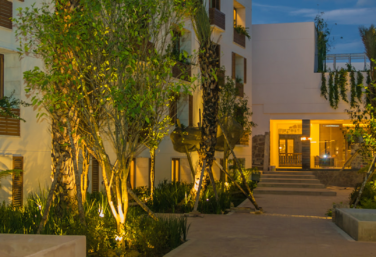COLONIAL MEXICO
Baroque architecture, cobblestone streets and tree-lined plazas, speak of the strong Spanish influence that runs throughout Colonial Mexico in the heart of Mexico’s interior.
Recognized as the region that sparked the Mexican revolution, Colonial Mexico evokes sentiments of liberation and revolution and is still looked upon today as a source of national pride. Colonial architecture and Spanish-style cities evoke stories of Mexico’s pre-independence history while colorful cobblestone streets and baroque architecture attract visitors all year round.
SAMPLE ITINERARIES
Use the itineraries below to generate ideas for your vacation. Each itinerary is completely customizable – you choose your dates, accommodations, activities and more to create your perfect Mexico holiday.
16 Travel Itinerarie(s) Found
Colonial Mexico Trip: Exploring The Heartland
Journey into the heart of Colonial Mexico in Guanajuato and Michoacan for an intimate experience with Mexico's history and lore...
| Colonial Mexico, Mexico City | ||
| 7 days |  From $Please inquire From $Please inquire |
|
Colonial Mexico Highlights:
- San Miguel Allende – This colorful town is a thriving center for art and culture. Voted as the number one city to live in by Condé Nast in 2013, it is a bustling expat center with numerous cathedrals, shops, restaurants and art galleries. As you wander the cobblestone streets, don’t be surprised to stumble upon live music or a live performance at a park or in a restaurant.
- Querétaro – The capital of the state of Querétaro, this lively city is most beautiful at night. Said to be one of Mexico’s cleanest cities, it was deemed a UNESCO World Heritage Site in 1996.
- Guanajuato – Guanajuato is a city of incredible charm hidden in the Sierra de Guanajuato Mountains. Its center is a maze of cobblestone streets lined with pastel-colored buildings and colonial ironwork. Paying homage to its colonial past, Guanajuato has no traffic lights or neon signs and has been a UNESCO World Heritage Site since 1988.
- Morelia – Founded in 1541, the capital of Michoacán is a well-preserved colonial city and a UNESCO World Heritage Site. New buildings in the city’s center must follow strict building codes to maintain colonial Spanish architecture. The main plaza and numerous parks offer tranquil areas of retreat within the city.
- Pátzcuaro – Located in the highlands of Michoacán and in the heart of the Purépecha region, Pátzcuaro was named a pueblo mágico or magic town in 2002. Filled with impressive churches, cobblestone streets, and beautiful plazas, it overlooks Pátzcuaro Lake that is known for its unique Day of the Dead celebrations.
- Zacatecas – Capital of Zacatecas state, this colonial city is replete with Spanish style architecture and a large cathedral. Known for its silver-mining history, Zacatecas’ northern location limits the amount of tourism the city sees, making it a hidden gem for visitors.
- Monarch Butterflies – Every year, millions of monarch butterflies make a remarkable journey from Canada down to the pine tree-abundant mountains of Michoacán. A visit to this region outside of Morelia during this astounding migration is an unforgettable experience.
- Guadalajara – The capital of the state of Jalisco and second most populated city in Mexico, Guadalajara is the birthplace of mariachi music. Old colonial charm meets modern living in a city that boasts shopping, museums, sporting events and day trips to near by Tequila and Lake Chapala among the many things to do there.
- Puebla – Boasting more than 70 churches in the historic city center alone, Puebla maintains its close ties to colonial Spain through its architecture and famous painted ceramic tiles. A visit to the nearby magic town of Cholula to see the church built upon the largest pyramid base in Mesoamerica is a must.








